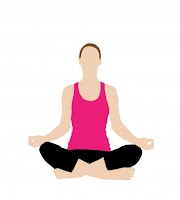How Long Does It Take to Become Good at Yoga?
Yoga, a practice that goes beyond the mat and weaves into every aspect of your life. If you're reading this, chances are you've asked yourself the question, "How long does it take to become good at yoga?" You're not alone. This is a query that yoga novices and even more experienced practitioners often grapple with. The answer, however, isn't as straightforward as you might think.
Defining 'Good' in Yoga
The Subjective Nature of 'Good'
What does 'good' even mean in the context of yoga? For some, it's the ability to execute complex poses or asanas with ease. For others, it's a state of mental clarity or spiritual enlightenment. Because yoga is a multifaceted discipline, 'good' can look different from one person to another.
Benchmarks: Flexibility, Strength, and Mindfulness
While 'good' is subjective, there are some common benchmarks that people often use to measure their progress in yoga. These are:
- Flexibility: The ease with which you can perform stretches and hold poses.
- Strength: Your ability to maintain poses that require muscle engagement for an extended period.
- Mindfulness: How well you can focus during your practice, minimizing distractions and staying present.
Factors Influencing Progress
- Frequency of Practice: The more you practice, the quicker you'll improve—simple as that. While practicing every day is ideal, even a few times a week can lead to noticeable improvement.
- Individual Physical Condition: Your current physical state plays a significant role in how quickly you'll progress. Factors such as age, previous athletic experience, and even genetics can either accelerate or slow down your yoga journey.
- Mindset and Dedication: A committed mindset can be your biggest ally. Yoga is as much about mental strength as it is about physical ability. Being dedicated and consistent will hasten your progress exponentially.
In summary, becoming 'good' at yoga is a complex equation influenced by various factors, both internal and external. Stay tuned as we delve deeper into what these benchmarks mean and how you can optimize your practice to meet them.
Milestones in the Yoga Journey
- First Month: Within the first month, you'll get acquainted with foundational poses like Downward Dog, Warrior, and Tree Pose. You'll also begin to understand the synchrony between breath and movement, which is a cornerstone of any yoga practice.
- Three to Six Months: At this stage, you'll likely start noticing some changes, both physically and mentally. Your flexibility may improve, your strength could increase, and you might find it easier to achieve a state of calm during your practice.
- One Year: Reaching the one-year milestone often marks a deeper connection to your practice. You'll have gained a good grasp of both the physical and mental aspects of yoga, enabling you to perform intermediate poses and possibly even develop a dedicated meditation routine.
Some Yoga Styles
- Hatha Yoga: Hatha is often considered the most beginner-friendly style of yoga. It’s a great starting point for those new to yoga, emphasizing slower movements and focusing on basic poses.
- Ashtanga or Vinyasa: If you're looking for a more dynamic, physically challenging style, Ashtanga or Vinyasa might be more up your alley. These styles can accelerate your progress in terms of strength and stamina but may require a higher base level of physical fitness.
- Yin Yoga: For those who are more interested in the meditative, calming aspects of yoga, Yin Yoga is worth considering. The poses are held for longer durations, helping to improve flexibility and mindfulness over time.
The Learning Curve
- Common Plateaus: Most practitioners will experience plateaus where it feels like progress has stalled. This is a natural part of any learning process and is often a sign that you need to either intensify your practice or focus on different aspects of yoga.
- Breaking Through Barriers: To move past these plateaus, consider incorporating new poses or even switching yoga styles. Another effective strategy is to attend workshops or one-on-one sessions to receive personalized feedback and recommendations.
Your journey in becoming 'good' at yoga is a marathon, not a sprint. By understanding the milestones, different yoga styles, and the learning curve, you'll be better equipped to make the most of your practice.
External Aids for Quicker Mastery
- Yoga Retreats and Workshops: Taking part in a yoga retreat or workshop can provide an immersive experience that's beneficial for quick mastery. These settings allow you to delve deeper into both the physical and spiritual aspects of yoga, often under the guidance of experienced instructors.
- One-on-One Sessions: Personalized attention from a certified yoga instructor can identify your strengths and weaknesses, offering targeted exercises to accelerate your progress.
- Online Resources: The digital age has made it easier than ever to access high-quality instructional videos, guided classes, and even virtual one-on-one sessions. Utilizing these resources can supplement your regular practice and offer new perspectives.
- The Journey is the Reward: The most important realization in your yoga journey is that the process itself is the reward. The concept of being 'forever a student' is deeply ingrained in yoga philosophy. Mastering a pose or reaching a new level of spiritual understanding simply opens the door to new challenges and deeper knowledge.
Conclusion
While the question "How long does it take to become good at yoga?" is common, the answer is deeply personal and varies from one individual to another. Various factors such as your initial physical condition, the style of yoga you choose, and your dedication level all play a role. External aids like retreats, one-on-one sessions, and online resources can accelerate your mastery. But remember, the real joy in yoga comes not from achieving a final destination but from the ongoing journey. Your path in yoga is unique to you; relish each step you take on it.







0 Comments